Posts Tagged ‘Churchill’


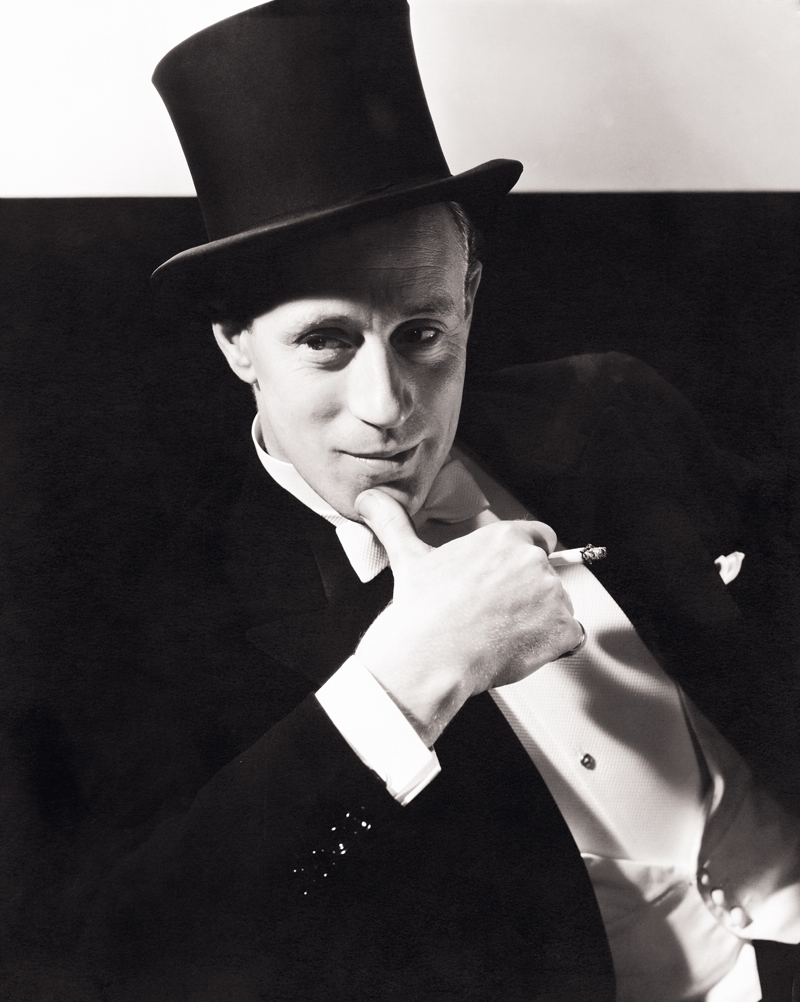
On June 1, 1943, British actor, Leslie Howard, was killed when his plane, traveling from Lisbon to England, was shot down by German aircraft over the Bay of Biscay. All 17 persons on board were killed.
Theories abound as to why the plane was attacked – ranging from mistaken identity (Howard’s traveling companion bore a resemblance to Winston Churchill and Howard to one of Churchill’s bodyguards, also Churchill was known to be traveling from North Africa during that same period), to intelligence or espionage connections (Lisbon was a hotbed of espionage and Howard was rumored to have ties to British intelligence), to a grudge by Goebbels against Howard (who was very active in British anti-Nazi propaganda campaigns).
Regardless of the cause, the loss of Howard at only the age of 50 was tragic. His talents as a stage and screen actor continue to live on in legendary roles in Gone with the Wind, Pygmalion, Of Human Bondage and many others.
As a footnote, Howard’s death was reported in the same edition of The London Times that included the death of Major William Martin, a man who never actually existed, but played a major role in Operation Mincemeat.



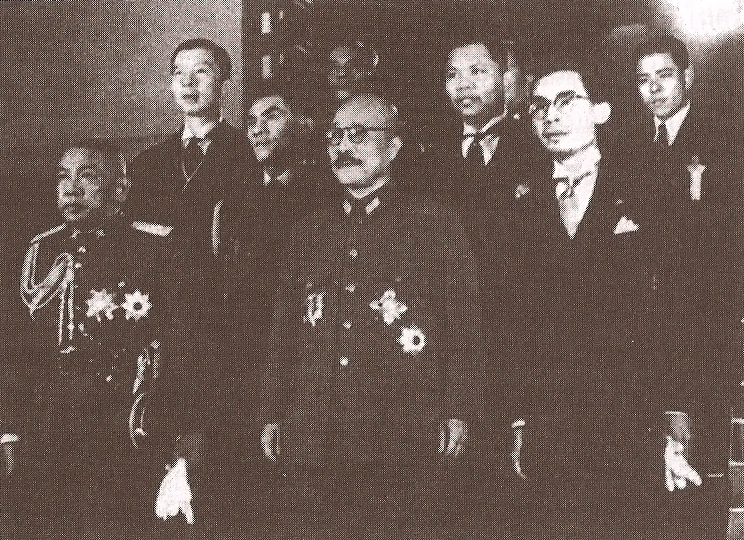
Photograph of Phot Phahonyothin (far left) with Hideki Tojo (center) in Tokyo 1942)
On this day in 1941, Thailand allied with Japan. Thailand was valuable for the Axis powers, as their airfields, ports, and railways would be instrumental in planned invasions of Malaya and Burma. The partnership was not necessarily an equal one; their alliance was the result of the December 8 Japanese invasion of Thailand after failed negotiations, the Thai resistance lasting only hours before a ceasefire was declared. Like many countries, Thailand joined the Axis powers because of military pressure.
Why countries joined the Axis or the Allies was complex, often rooted in many different factors, such as how much military power that country held, what political system they followed, and where they were located geographically. When trying to understand the complicated course of WWII, it is helpful to know the main players and their goals. So, who were the Axis powers and who were the Allies? (more…)



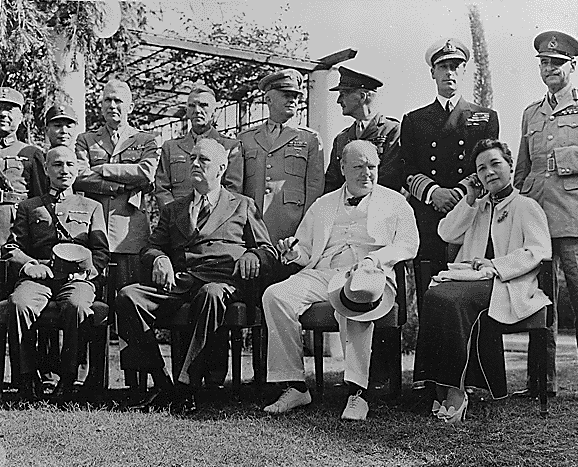
Kai-shek, Roosevelt, Churchill, and Madame Chiang seated at the Cairo Conference in November 1943. Courtesy of the National Archives.
Today in 1943, President Roosevelt, Prime Minister Churchill, and Generalissino Kai-shek convened in Cairo, Egypt to reevaluate Allied tactics on fighting and defeating Japan, and the subsequent actions that would be taken once the Pacific War had been won. The Cairo Communique, as it became known, was released to the public on 1 December 1943 and outlined goals for post-war Japan.
(more…)



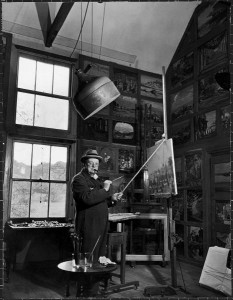
Winston Churchill in his Chartwell painting studio
Register now for the 2013 Winston S. Churchill Symposium in New Orleans!
The philosopher Isaiah Berlin wrote that Churchill was “the largest man of our times,” and a brief acquaintance with Churchill’s long life and career bears out this claim. In his lifetime Churchill was a heroic war leader and Prime Minister, a foot soldier and a First Lord of the Admiralty, a Member of Parliament and a Chancellor of the Exchequer. He played polo, hunted big game in Africa, and gambled in Monte Carlo; he was a loving husband and an indulgent father. Before he was forty he saw war as a journalist in Cuba, as a cavalry officer in Sudan, and was a POW in South Africa. He modernized the prewar Navy and served as an officer in the Great War trenches in France. He was a noted historian and won the Nobel Prize for literature.
But politics and writing were ultimately serious work and business for Churchill. Writing served to promote and support his political life; it was an extension of his career and influence. While he proliferated in both pathways, success did not always come easily. In particular, writing extracted effort on his part, and was a necessary employment for the financial support of his family. He enjoyed the delights of conversation and the dinner table, but these were also tied to his career interests. Being passionately devoted to his career, he did not engage in hobbies which appeared to have little utility in promoting his career efforts.
After the failure of the Gallipoli campaign appeared to have ended his political career in 1915, the “Muse of Painting” appeared to rescue Churchill from his deepest bout of “Black Dog” (the nickname he gave his deep depressions). His cousin introduced him to watercolors while in the garden at Hoe Farm. Churchill at first timidly attempted to apply paint to the canvas; when he realized that the canvas would not strike back, he entered whole-heartedly into the effort. Being Winston Churchill, a man who did things for history, naturally he early began to paint in oils. Painting was the one activity which he did for the sheer pleasure, enjoyment, and challenge of the art, and without a political motive. It claimed his attention for the rest of his life, and was perhaps the surest method he had of relaxation.
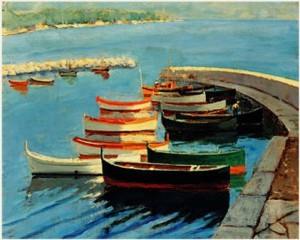
Churchill's Study of Boats
Painting was not a frivolous delight to Churchill. Painting appealed to a very deep element in his personality, a serious and meaningful key to his being. Painting connected Churchill to the pursuit and creation of beauty in the world. Churchill the painter was a different man than the world had become accustomed to know. In this field, he eagerly sought advice and consultation, and was willing to take direction from others. In his political and literary talents, he was the supreme judge. But in his attitude towards painting, Churchill not only subordinated his will, but submitted to an inner light and higher power.
In the opinion of this writer, Churchill the painter communed and connected closely with an inner religious or philosophical spirit. He was not a practitioner of any orthodox religious faith. However, as a young man he had become aware of gaps in his knowledge and education which he had assiduously set out to correct. As a young subaltern in India, he had spent long hours reading in ancient history and philosophy. His readings in Gibbon and the Greek philosophers exposed him to the classical ideals of truth, beauty, and the good. These he sought in his painting through his explorations of colors and nature.
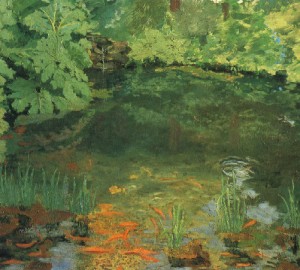
Churchill's goldfish pond at Chartwell
Churchill the painter became quite committed and accomplished in his hobby. He eventually built a painting studio on the grounds of his home. In the mid-1920s, Churchill anonymously submitted some of his work to a public exhibit, where he gained recognition from some of Britain’s leading art critics (who were surprised when they learned the identity of the artist). One of the critics observed that Churchill painted from a deep, calm part of his soul.
This was an accurate insight. Painting was the one activity that he performed completely in silence, and it melted away his anxieties, allowing him to lose himself in the study of colors and nature. Churchill did not paint pictures which connected to his political or military life, such as portraits of his contemporaries. With the exception of a few early canvases from his wartime service at “Plug Street” in France, as his troops referred to their headquarters, he did not paint scenes of violence, death or war. He preferred landscapes and seascapes, full of color and natural life. He painted nature: mountains, seas, sunsets, forests, rivers. When man did intervene in Churchill’s paintings, it was usually in the form of an artwork: a china Buddha, a stone sculpture in a windswept garden, ancient Roman aqueducts and Greek ruins, bridges spans crossing waters, boats awaiting to set sail. And he painted the personal things which adorned the central pleasure of his life: his home. He painted few portraits, but painted those he loved, such as his wife Clementine. He painted the flowers, bottles, and vases which adorned his beloved house, Chartwell, especially the landscapes surrounding the house and overlooking the weald of Kent.
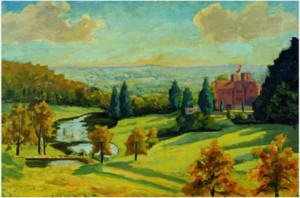
Chartwell in the 1930s
A man in a hurry most of his life, the muse of painting stilled and becalmed Churchill’s sense of the passage of time and life, of the movements of history. It centered and brought out his spiritual conviction of the immutability of nature, and the joy of living in the natural world. And it reinforced the moral structure in his nature that compelled him to stand firm in his ultimate contest against the failed painter who wished to create a new world through destruction and death, Adolf Hitler. Winston Churchill’s hobby gives us a remarkable and clear insight into the man himself, and into the nature of how truth, beauty and the good lie within all.
Dr. Keith Huxen is the Senior Director of Research and History at The National WWII Museum.



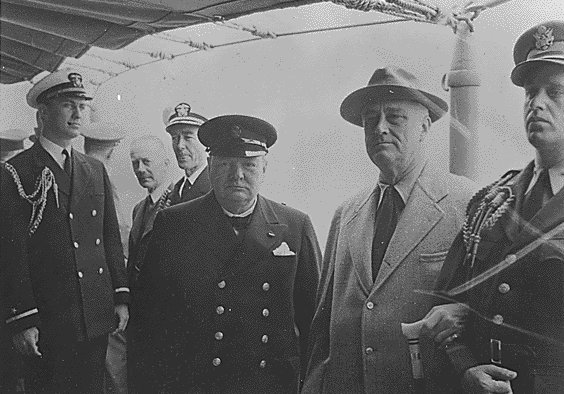
With the 70th anniversary of Pearl Harbor on the horizon, we turn our attention to the eve of US involvement in the war that changed the world. This entry by the Museum’s Senior Director of History & Research, Keith Huxen, is just one of many historical essays on 70th anniversaries we will be posting in coming years. You can also keep up with significant dates by following the Museum’s Twitter feed, @wwiitoday.
The Atlantic Charter: 70th Anniversary, August 14, 1941
In the summer of 1941 the historical pathway of the Second World War was rapidly changing. In Asia, Japan found herself still struggling after four years to complete and consolidate her conquests in China without recourse or access to the raw materials spread further across the Southeast Asian archipelago. Pressure in the European war was also reaching critical mass. Great Britain, having survived the previous summer by fending off Operation Sea Lion, Hitler’s planned invasion across the English Channel, had continued to fight Germany alone. Unable to complete Britain’s defeat by late October 1940, Hitler gambled and unleashed Operation Barbarossa, the German invasion and double-cross of the Soviet Union. The Germans believed that total victory over the USSR could be completed in six months. Germany’s gamble would achieve four great objectives: Soviet defeat would rob Britain of her last potential European ally and force Britain to a separate peace; Hitler would eliminate the Soviet Communist regime which he regarded as his great ideological enemy; Hitler would acquire through invasion the vast Lebensraum or eastern living space in Ukraine where he intended to build a purely Aryan empire; and last, as the German army acquired and controlled the territories of Eastern Europe, Hitler would gain control of two-thirds of Europe’s Jewish population (along with other racial undesirables in the Nazi lexicon) which he intended to extinguish from European life. Unleashed on June 22, 1941, the Nazi invasion and strategy appeared to have a good chance of success as the Nazis drove deep into Soviet territories.
Despite a long and dedicated political opposition to Communism, Britain’s Prime Minister Winston Churchill immediately welcomed Joseph Stalin and the Soviets as an ally in the fight against Nazism. When questioned on his political pivot, Churchill famously observed that “if Hitler invaded Hell, I would at least make a favorable reference to the Devil.”
(more…)












